Both Real Madrid and Barcelona went into the 229th edition of El Clasico in exhilarating form. Real Madrid had won their last eight in all competitions, scoring 38 in the process and conceding six. Barcelona had won their last three following the 3-2 Champions League defeat to Paris St Germain, but it was their La Liga form that had been impressive: seven wins and one draw, scoring 22 without conceding a single goal.
Thanks to two defeats from their opening three games, Real Madrid went into the game in third position and four points adrift from leaders Barcelona.
Despite the gap, Real Madrid were considered favourites thanks to home advantage and a fearsome strike rate over their past eight games.
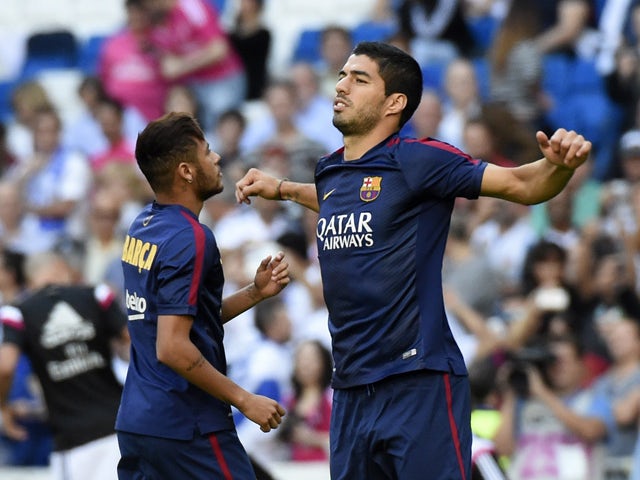 © Getty Images
© Getty Images
This marked the first game that Luis Suarez was eligible for the senior side since signing for Barcelona in the summer, the Uruguayan selected to partner Lionel Messi and Neymar in attack. Sergio Busquets returned to the Barcelona starting lineup, having missed the past two games due to injury, and took up his usual holding midfield role. In turn this sent Javier Mascherano back to his usual centre back role.
For Real Madrid, Isco played in place of the still-injured Gareth Bale. Having missed him previous fixture, the 3-0 Champions League win over Liverpool at Anfield in midweek, Sergio Ramos returned to partner Pepe at the centre of defence. Raphael Varane, despite his excellent showing against Liverpool, was relegated to the bench as a result.
Everything pointed to this being an encounter in which the winner would be decided by narrow margins. The clash of styles - Real Madrid's physical, counter-attacking system vs. Barcelona's considered, possession-based approach - made for an intriguing tactical battle.
However, it ended up being a one-sided affair and the two goal gap could easily have been greater. It was Luis Enrique's first defeat as Barcelona manager and Madrid's ninth victory in a row.
Barcelona attempted, and failed, to control the middle
The two teams might have been playing on the same pitch, but they could hardly have played more differently from one another. At times it looked as though they were barely playing the same game. Madrid were obsessed, throughout the entire game, with getting the ball into wide areas early and gaining ground through the runs and passes of full backs Marcelo and Dani Carvajal.
Barcelona, conversely, were generally slower in their build-up play and relied on the central midfield pairing of Xavi and Andreas Iniesta to feed intelligent passes into Messi, Neymar and Suarez ahead of them.
As a result, the tempo of the game was markedly different depending on which team had possession. Madrid did not linger in the middle third of the pitch for long, especially in the first half after finding themselves a goal down after just four minutes. Barcelona spent much more time with the ball at their feet around, and just inside, the halfway line - their plan to thread the needle and create clear chances for their forward three.
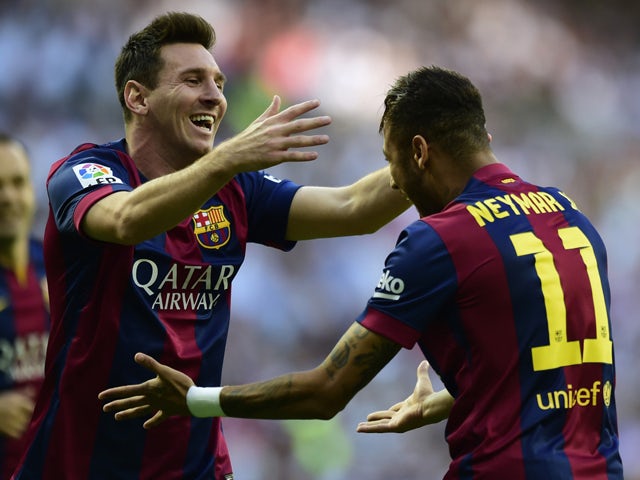 © Getty Images
© Getty Images
Unfortunately for Barcelona, the plan didn't work. Neymar's fourth-minute goal was the only shot they had in the opening 20 minutes of play. Madrid managed had managed six over the same period.
The problem for Barcelona through the middle was a lack of movement and connection between Xavi/Iniesta and the front men, with their midfield and attack looking like two entirely separate units at times.
None of the three front men was regularly prepared to drop deep to both link up the play and pull Madrid's centre-backs out of position, while the midfield was afraid to come too far forward and risk getting caught out by the speed of Madrid's counter-attacks.
This led to Madrid being able to easily retain their defensive shape, each player in the defensive phase typically able to comfortably stick to their zone and control it.
On one of the few occasions Messi did drop deeper, Barcelona scored. With the Argentinean picking up the ball inside his own half, Marcelo was fooled into stepping out of position and closing him down.
This left Ramos isolated against Suarez, the latter able to switch play quickly and find Neymar free at the edge of the box. Running across the box, into the space vacated by Ramos, Neymar was allowed a clear sight of goal and duly scored. Neymar's run was aided by Messi who ran across goal, thus pulling Modric out of the defensive position he had taken up to cover for Ramos's absence.
Barcelona's next best chance came from the same area, with Marcelo pulled out of position by an advancing Dani Alves. This again gave Suarez the space to cross, this time to Messi who was denied at point-blank range thanks to an excellent save from Iker Casillas.
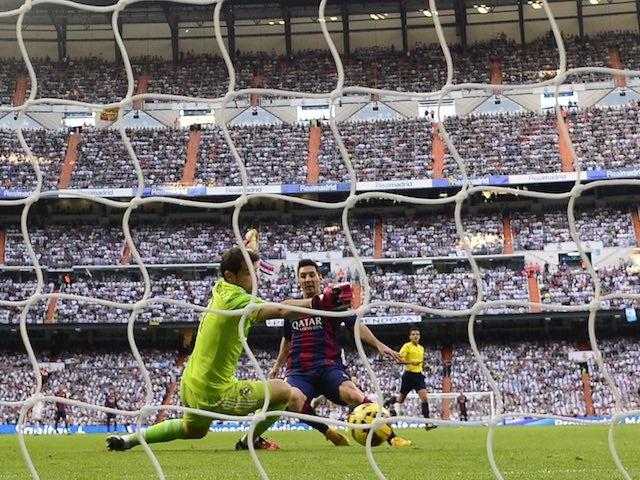 © AFP
© AFP
With this sort of quality chance coming from wide areas, and so little coming from the middle, it's surprising that Barcelona didn't attempt to play the ball into such positions more often.
What makes the lack of penetrating wide play even more surprising is that Suarez drifted towards the touchline extremely often (especially in the first half), his role seemingly designed specifically to pull Madrid's defenders out of shape to create space for Messi to run into through the middle. The same was also true of Neymar on the left.
Barcelona might have found greater success by playing the ball to Neymar and Suarez much earlier during the attacking phase, relying less on Xavi and Iniesta to perform perfect passes.
With Xavi and Iniesta so intent on protecting themselves defensively by staying well away from Madrid's box, Messi infrequently found space to work in. If Suarez and Neymar had taken turns to play more centrally, making up for Iniesta and Xavi's absence, Barcelona might have been able to ask more questions of Madrid's defence.
Marcelo and Carvajal run riot
Carlo Ancelotti has many reasons to happy, but the performance of his full-backs is chief among them.
Whenever Madrid regained possession in defensive areas they would get the ball quickly to the feet of Marcelo on the left or Carvajal on the right - the former then dribbling with speed to partner Isco and/or Cristiano Ronaldo in attack, the latter preferring to pass his way forward via neat combinations with James Rodriguez.
Barcelona's usual high-pressing strategy means that it fell to Suarez and Neymar to close down the full-backs instantly, but neither won the battle regularly. Neymar had slightly more success than Suarez in this area during the first half, but once Rodriguez picked up on this and began to come deeper to give Carvajal extra support, the Brazilian failed in his duties.
It could be that Suarez, who was so adept at this kind of pressing for Liverpool last season, is still struggling for full match fitness and therefore partially shunned his defensive responsibilities in order to attack with full force. If true, then Enrique must be questioned over including him in the starting lineup.

Marcelo's transitions with the ball from the back to the front were so quick that Alves looked entirely lost defensively for much of the match. He found himself behind the ball so frequently that Busquets, who covered for him when Barcelona would attack, often looked as though he was playing as an orthodox right-back as opposed to the holding midfielder that he's supposed to be.
In turn, he put enormous pressure on the Barcelona centre-backs, who struggled to contain the movement of Benzema, Modric, Kroos and Rodriguez.
No surprise, then, that Madrid's first goal came thanks to Marcelo and courtesy of Alves. Overlapping with Rodriguez, Marcelo ran into the box and left Alves standing, a low cross forcing Gerard Pique to block it with his hand and concede a penalty. Had Alves managed to force Marcelo wider, or blocked the cross himself, a corner would have been the worst outcome.
Jeremy Mathieu, playing out of position at left back in place of Jordi Alba, was equally as poor Alves. In theory, playing Mathieu (usually a centre-back) at full-back gives Alves the freedom to get forward, safe in the knowledge that three strong ball winning defenders, plus Busquets, are going to cover for him.
The movement of Carvajal, and his partnership with Rodgriguez, however, rendered Mathieu redundant. When Mathieu got forward he looked uncomfortable working so high up the pitch and was often caught out by the speed of Madrid's counter-attacks. When he stayed back he was unable to disrupt the passing lanes favoured by Carvajal and Rodriguez.
As aforementioned, Matheiu and Alves's struggles were not helped by Neymar and Suarez's inability to disrupt Madrid's counter-attacks before they began.
Carvajal and Marcelo joined Kroos and Rodriguez as the four players that made the most successful passes for Madrid, demonstrating the effectiveness of their performance.
The speed and directness of approach facilitated by the full-backs is revealed in a few key statistics accumulated over the 90 minutes. Barcelona strung together 184 passes in the attacking third, compared to a 'mere' 91 for Madrid.
Considering Madrid managed two shots more than the visitors, these numbers are damning and point firmly towards a lack of penetration - with Barcelona's passes coming in front of Madrid's defence.
Conversely, Marcelo and Carvajal allowed Madrid to get up the field so quickly during counter-attacks that they consistently found themselves behind the opposing full-backs and with the luxury of having only to play two or three passes to create a goal-scoring opportunity.
The full-back position has, over the past decade, become one of the most important in modern football. With their performance here, Marcelo and Carvajal have aptly demonstrated that fact.
Madrid take control in second half
In the first half Madrid were seemingly comfortable to allow Xavi and Iniesta possession inside the attacking half, content to stick tightly to the forwards as their main form of defence. That wasn't case in the early moments of the second period, the home team closing Barcelona down more quickly and aggressively across the entire pitch.
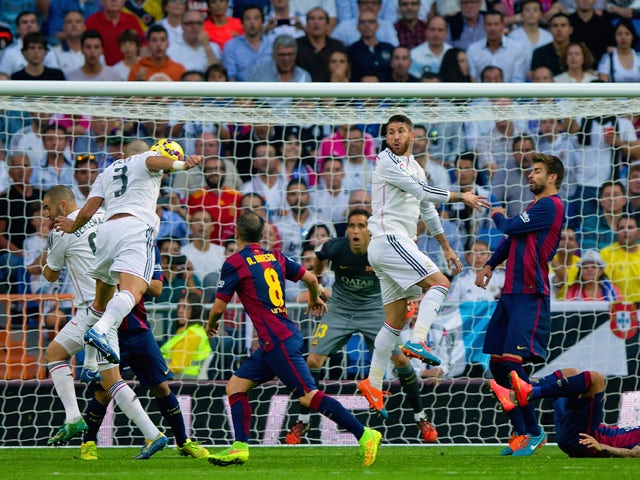 © Getty Images
© Getty Images
The change dramatically increased the number of attacks Madrid launched directly from tackles won in the middle third of the pitch, their second goal coming from a corner won from just such a counter-attack.
Pepe subsequently scored with a free header from the corner far too easily. Madrid dominated from set pieces for the entire game, which is no surprise given the relative physicality of the two teams.
Realising the lack of penetration through central areas, Enrique decided to replace Xavi with Ivan Rakitic on 61 minutes. The plan was obvious: position Rakitic higher than Xavi had been playing and further over to the right, giving Suarez more license to occupy central positions while strengthening the link between midfield and attack.
Madrid's third goal, scored in the same minute as the substitution, was as close to the Madrid scoring blueprint as Ancelotti could ever have wished for. In a single swoop the goal had destroyed the potential effectiveness of the Rakitic substitution, allowing Madrid to focus on defensive discipline for the rest of the game.
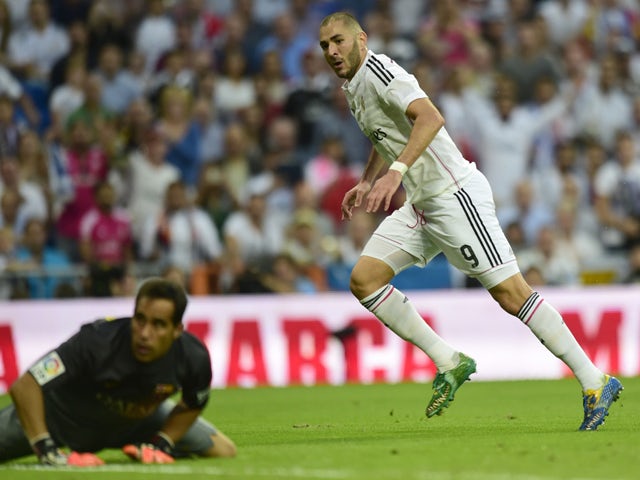 © Getty Images
© Getty Images
Isco, who, along with his full-backs, embodied Madrid's high-tempo approach, managed to pressure Iniesta and Mascherano into a miscommunication that led to a Karim Benzema goal - after touches from Isco, Ronaldo and Rodriguez.
Applying pressure around the halfway line, followed by switching the play and scoring with just three passes, is the way Madrid want to play. Barcelona didn't do enough in midfield or down the flanks to nullify the approach and they paid for it.
From here on Madrid were comfortable to once again allow Barcelona to play the ball in front of their defence, attacking exclusively on the counter-attack from deep starting positions. Poor finishing was the only thing that prevented the scoreline being higher.
Substitutions tell the story
Interestingly, the timings and type of substitutions reveal a great deal about the relative troubles and successes of the two teams.
Aside from the Iniesta for Sergi Roberto switch due to injury, Barcelona's subs were entirely the result of reacting to Madrid's control over the match. Their starting lineup was unable to slow down Madrid's transitions and, as such, they found themselves chasing the game. Even when they were leading in the first half, they never looked comfortable.
When a team makes changes based around reacting to another team's dominance, it can only mean that the original gameplan was flawed.
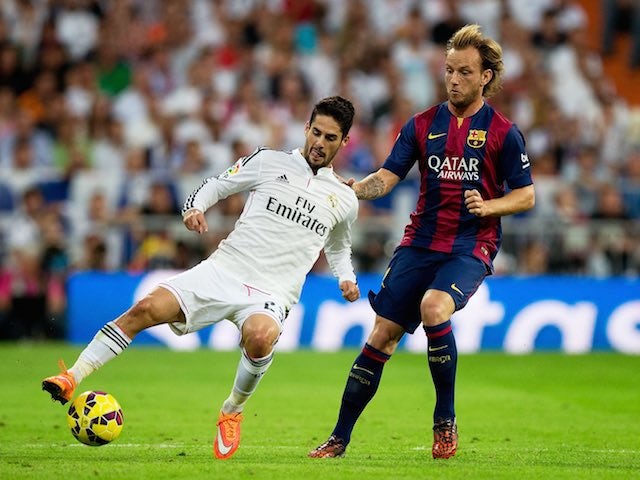 © Getty Images
© Getty Images
The Rakitic substitution, which changed Barcelona's shape dramatically, might have made a bigger difference had Madrid not scored instantly following the change, but we'll never know.
Rakitic's inclusion was designed as a change to be made when the game was 2-1, but Madrid's third goal completely laid waste to that particular plan. By sitting deeper and defending a two goal lead they never gave Rakitic the space he might have had when the game was more finely balanced on a single goal.
Pedro, coming in for Suarez on 70 mins, was entirely ineffective. He made just seven passes in over 20 mins of game time.
On the other side, Madrid's superior gameplan was highlighted starkly by their substitutions. They didn't make their first change until 84 mins, with all three of their eventual switches involving the introduction of defensive players to allow them to more readily see out the game.
The game had been won comfortably by their starting 11 and Ancelotti's original instructions, giving them the luxury of using all three substitutions to simply run down the clock.
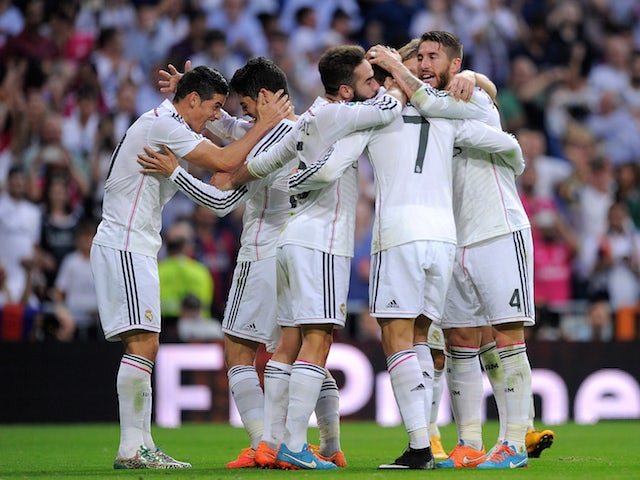 © Getty Images
© Getty Images
Incidents
4 Mins - Goal, Barcelona: Excellent move which saw Messi dropping deep to pick up possession, pulling Marcelo out of position and giving Suarez the space to cross to Neymar. Neymar scores with a precise shot from the edge of the box.
8 Mins - Yellow Card, Barcelona : Messi booked for a foul on Luka Modric, a late sliding tackle along the touchline at midfield.
14 Mins - Yellow Card, Barcelona : Neymar booked for an elbow on Carvajal during a contested header.
34 Mins - Goal, Real Madrid: Ronaldo scores from penalty spot following a burst into the box from Marcelo, the resultant cross handled by Pique at the front post.
38 Mins - Yellow Card, Barcelona: Iniesta booked for a foul on Modric that prevents Madrid launching a counter-attack. Incident comes seconds after a heavy (unpunished) challenge from Modric on Neymar.
50 Mins - Goal, Real Madrid: Pepe scores an unchallenged header from a Toni Kroos corner.
61 Mins - Substitution, Barcelona: Rakitic on for Xavi. Rakitic takes up a more attacking position on the right, allowing Suarez to play more centrally.
61 Mins - Goal, Real Madrid: Benzema finishes a deft counter-attacking move that started with Isco winning possession from Iniesta at the halfway line. Ronaldo and Rodriguez also involved in the goal.
70 Mins - Substitution, Barcelona : Pedro on for Suarez, who plays firmly on the right-hand side in front of Rakitic. The tactical substitution highlights just how devastating Madrid's goal was to Barcelona's original plan for Rakitic.
71 Mins - Substitution, Barcelona: The injured Iniesta is replaced by Sergi Roberto who produces some good passes from the left side of midfield but causes Madrid few problems.
74 Mins - Yellow Card, Real Madrid : Carvajal cautioned for a poor challenge from behind on Matheiu.
84 Mins - Substitution, Real Madrid : Isco replaced by Illarramendi who takes up a defensive role in midfield.
87 Mins - Substitution, Real Madrid : Benzema off for Sami Khedira, providing further defensive solidarity.
89 Mins - Substitution, Real Madrid: Modric off for Alvaro Arbeloa. The defender takes up Marcelo's spot at left back, the Brazilian playing out the last few minutes in central midfield.
93 Mins - Yellow Card, Real Madrid: Ronaldo booked for a kick on Alves.
No Data Analysis info








